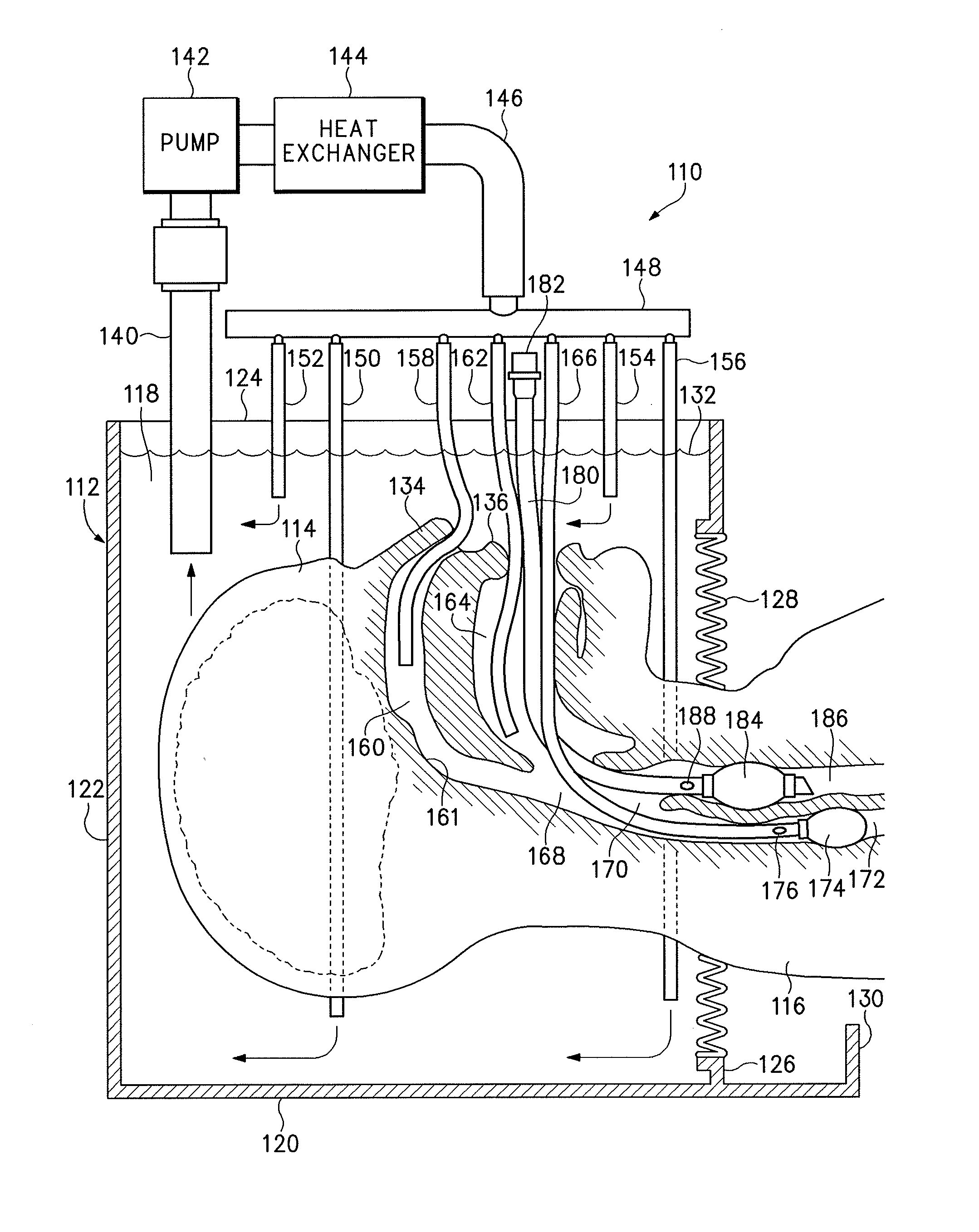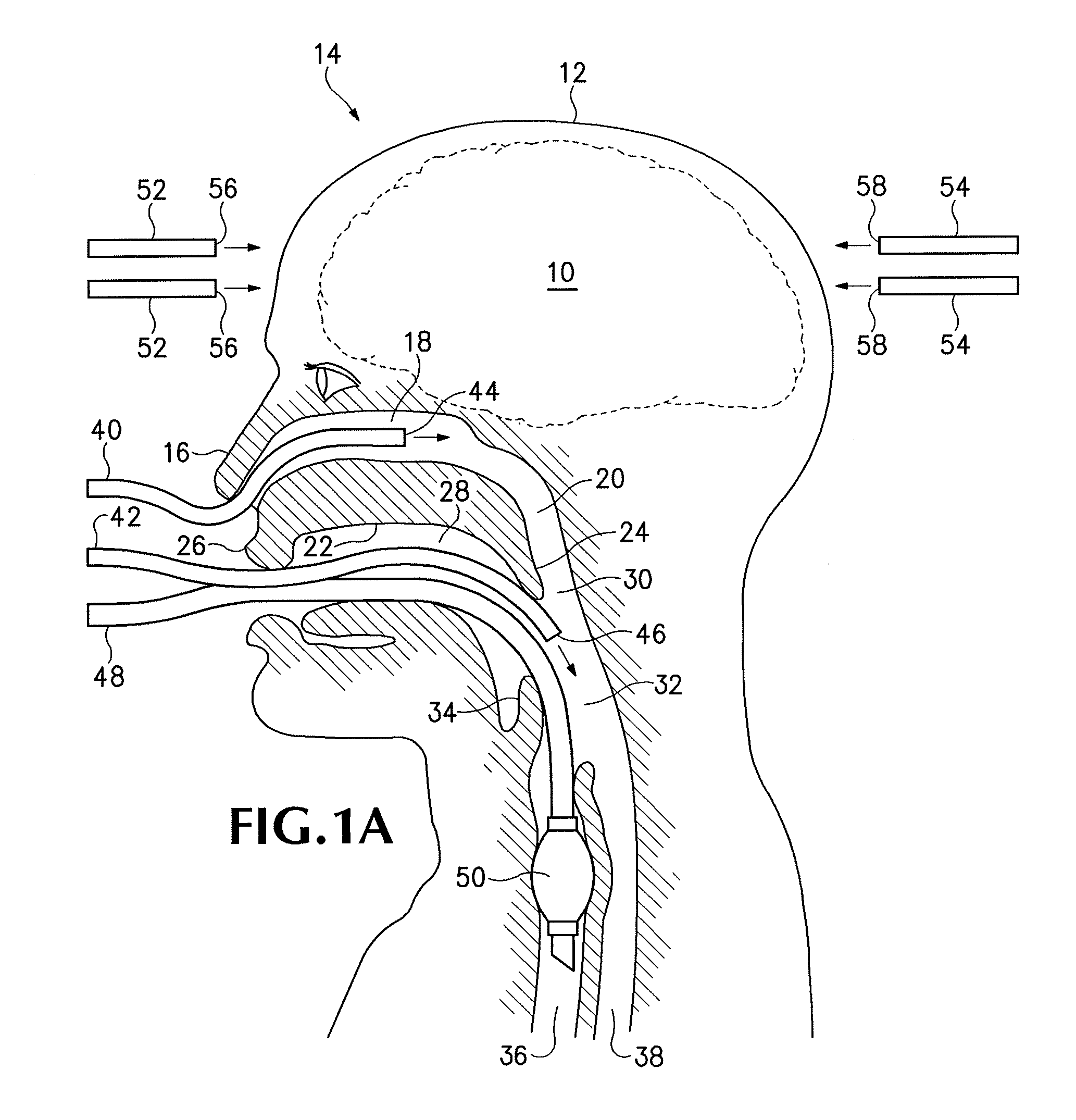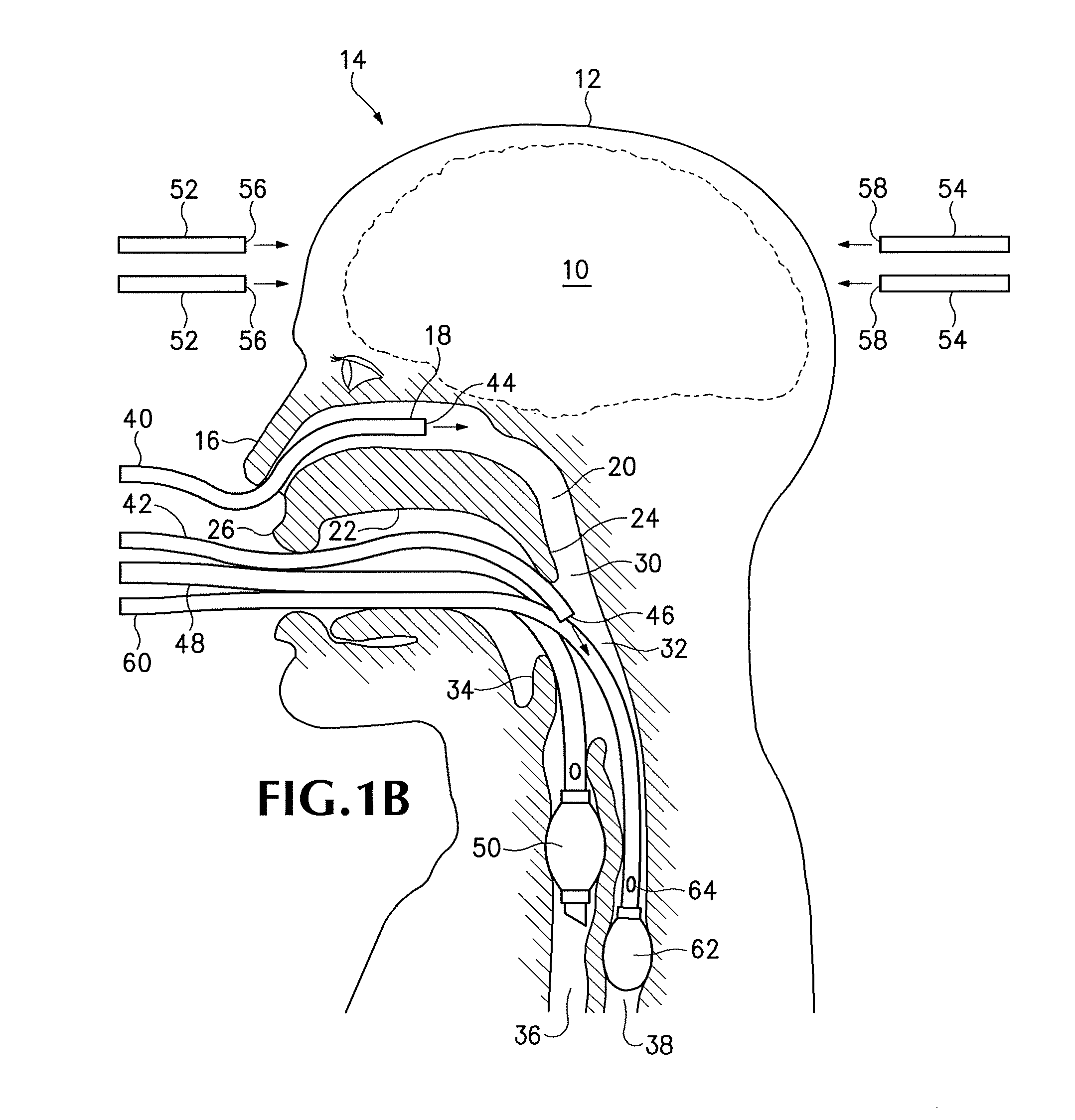Rapid Cooling of Body and/or Brain by Irrigating with a Cooling Liquid
a technology of cooling liquid and brain, which is applied in the field of inducing rapid cooling of the brain and/or body, can solve the problems that the induction of hypothermia has not been more effective in preserving tissue function
- Summary
- Abstract
- Description
- Claims
- Application Information
AI Technical Summary
Benefits of technology
Problems solved by technology
Method used
Image
Examples
example 1
Temperature of the Liquid
[0106]Since permanent brain injury is a major cause of death and disability, more effective methods of brain cooling will benefit a subject's overall medical recovery even if these treatments risk transient damage to other tissue beds. While frost-bite can sometimes occur at temperatures less than 0° C., perfluorocarbon (PFC) and other liquids at temperatures used herein are believed to be more beneficial than harmful in this method. For example, household freezers maintain their contents at −17° C. and food (such as ice cream) is consumed at this temperature without damage to the mouth or esophagus. Likewise, cold items from a freezer can be placed on damaged skin to reduce swelling (ice packs to traumatized areas) without unacceptable risk of tissue necrosis.
[0107]The esophagus and upper airway are resilient to a variety of damaging stimuli, such as acid reflux, toxic injections, radiation and chemotherapy. The lungs, upper airways and skin have been expos...
example 2
Precooling the Brain
[0109]The disclosed brain cooling method has been described in connection with the treatment of cardiac arrest, stroke, brain injury and other conditions. However, the method can also be used prophylactically, for example to prepare a patient for cardiovascular surgery in which the patient is placed on a heart-lung bypass machine. Prior studies have shown good outcomes of cardiac surgery performed on humans externally cooled to 25° C. with ice baths. Such patients have had encouraging outcomes after circulatory arrest that lasted for 30 to 77 minutes that was not supported by hear-lung bypass or other means. Adverse neurological outcomes were observed only in 3.8% of surviving patients, predominantly in those with arrest times longer than 30 min. The brain cooling method of the present invention can be substituted for the external cooling with ice baths during such procedures.
[0110]While “suspending” cerebral metabolism may explain the protective effect of hypoth...
example 3
Clinical Indications
[0111]A variety of clinical conditions can be treated with the methods and devices disclosed herein. In some embodiments, the method involves determining whether a subject has a condition that would benefit from treatment with the cooling method and then treating the subject with the method once it has been determined that the subject has that condition. In addition, the method includes determining whether the condition would benefit from relatively selective cooling of the brain or non-selective cooling, then administering that type of cooling (or a combination thereof). Examples of such conditions, and a treatment that can be initiated in response to finding that condition, are shown in the following Table 1.
TABLE 1Clinical Indications for Cooling, and Types of CoolingSelective cooling (targets cooling primarily the head and brain)Anoxic encephalopathyCardiac arrestHemorrhagic shockSepsisNeonatal anoxic encephalopathyStrokeEmbolicHemorrhagicHead traumaClosedOpe...
PUM
 Login to View More
Login to View More Abstract
Description
Claims
Application Information
 Login to View More
Login to View More - R&D
- Intellectual Property
- Life Sciences
- Materials
- Tech Scout
- Unparalleled Data Quality
- Higher Quality Content
- 60% Fewer Hallucinations
Browse by: Latest US Patents, China's latest patents, Technical Efficacy Thesaurus, Application Domain, Technology Topic, Popular Technical Reports.
© 2025 PatSnap. All rights reserved.Legal|Privacy policy|Modern Slavery Act Transparency Statement|Sitemap|About US| Contact US: help@patsnap.com



